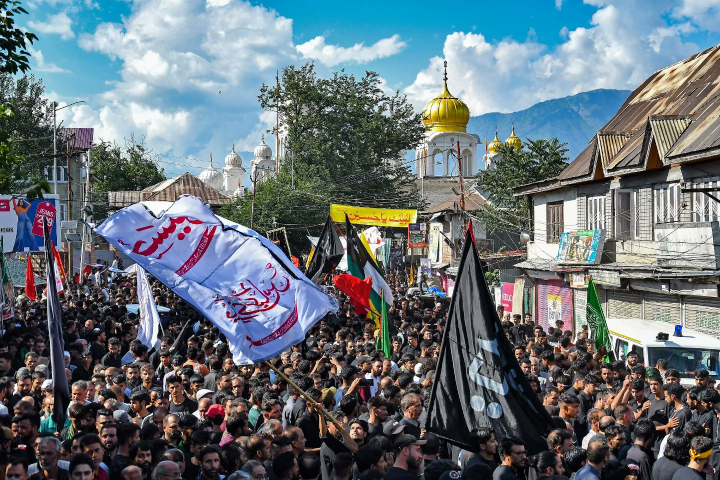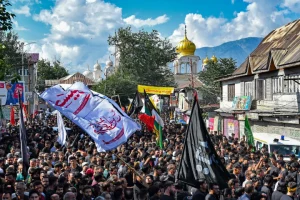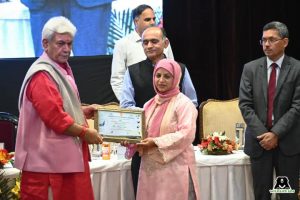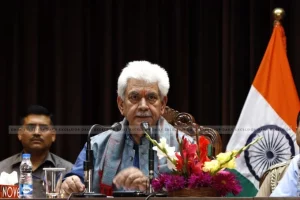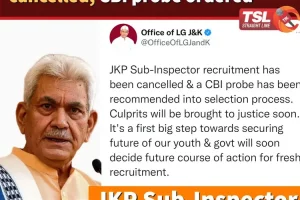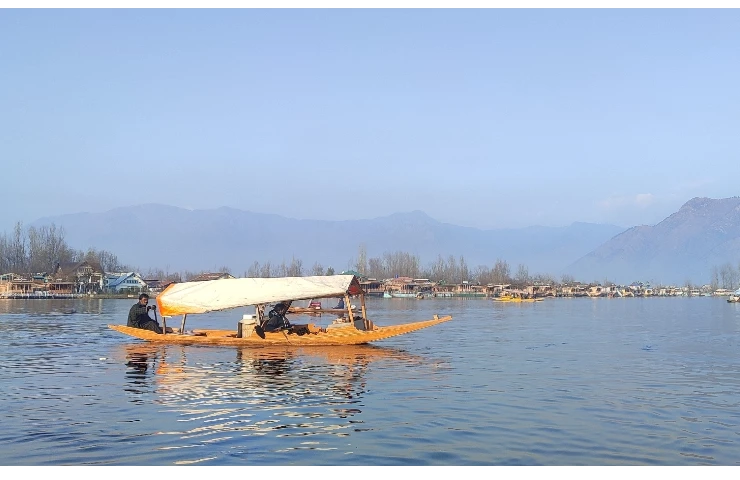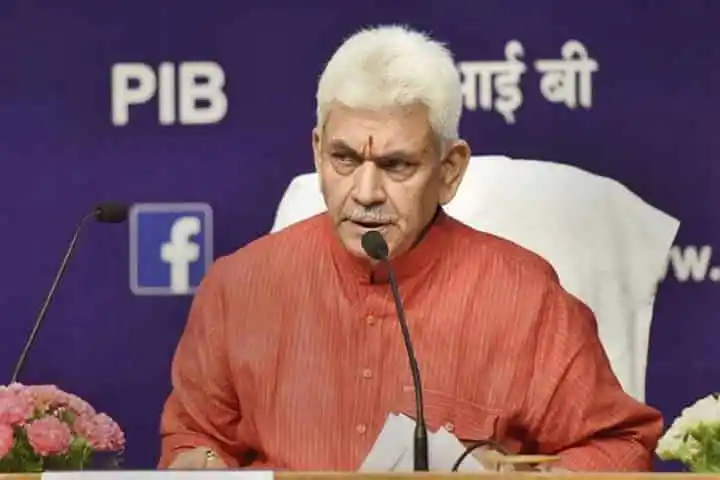Thousands of the Shia Muslim mourners took out a massive procession in Srinagar on the 8th of Muharram to remember the sacrifice of Prophet Mohammad’s grandson Hazrat Imam Hussain in the battle of Karbala, Iraq, after a long pause of 34 years on Thursday.
It is for the first time after August 1988 that the authorities, under the instructions of Lieutenant Governor Manoj Sinha after his consultation with the Government of India, permitted the 8th of Muharram mourning procession on its traditional route from Gurubazar, near Civil Secretariat, to Dalgate, through the Srinagar Civil Lines. It passed on peacefully through Jehangir Chowk, Budshah Chowk, Central Telegraph Office, Maulana Azad Road and concluded at the tourist hub of Dalgate.
#BigBreaking
After 35 years 8th Muharram Procession allowed in #Srinagar.
From Guru Bazaar #Srinagar to Dalgate. @OfficeOfLGJandK pic.twitter.com/9AMR4FwSZ4— Greater Ladakh (@Greater_Ladakh) July 27, 2023
The participants, sporting black outfits, carrying flags and standards in commemoration of the martyrs of Karbala and reciting tributes for Imam Hussain and his companions, treaded the distance of 3 kilometres and dispersed at Dalgate. Even as the authorities had fixed the timing of 6.00 am to 8.00 am for the procession, they relaxed the restrictions and let the procession conclude at 11.00 am.
Before 1988, the procession used to come out at Gurubazar at 2.00 pm. After passing through the same route, it used to conclude at Dalgate at 10.00 pm.
In the early 20th century, the Maharaja had issued a license for the procession to one Haji Kulu of Gurubazar, the founder of Yaadgar-e-Hussaini Committee. As per the permit, the 8th of Muharram procession used to start from Gurubazar, pass through Hari Singh High Street, Lal Chowk, Barbarshah, Nawpora and Khanyar and conclude at Imambara of Hassanabad. Its route was subsequently changed to Gurubazar-Dalgate via MA Road.
Curfew was imposed for the first time on 17th of August 1988 when Pakistan’s President and military ruler Gen. Zia ul Haq died in an air crash. Authorities imposed curfew and denied permission to the Muharram processions in view of a law and order problem later that week. Thereafter an armed insurgency broke out and permission was denied to the 8th of Muharram and the 10th of Muharram (Ashura) processions along their traditional routes in Srinagar.
While no procession came out on 8th of Muharram from 1988 to 2022, the 10th of Muharram procession changed its route from Abiguzar-Zadibal to Lalbazar-Zadibal. With a lesser number of participants, the main 10th of Muharram (Ashura) procession passes through a shorter distance of 3 km and concludes at Imambara Zadibal.
Almost every year after 1990, separatists and militants in the guise of mourners used to appear at Jehangir Chowk. They used to join splinter Shia mourner groups and attempt to take out the 8th of Muharram procession. Police used to bundle them in vehicles, detain them at a couple of Police Stations and release them in the evening. These photo ops used to circulate through the world media, creating an impression that the Government of India was not permitting religious practices and rituals of Muslims in the Kashmir valley.
Invariably, authorities used to have apprehensions of the religious processions being used to promote the separatist political agenda. On most of such occasions, the defiant groups, joined by separatists, used to shout slogans against India and in favour of azaadi.
However, for the first time this year, authorities decided to permit the 8th of Muharram mourning procession and deny the routine opportunity of photo ops and propaganda to the separatists. It was for the first time after 1988 that permission for the procession was granted to the licensee ‘Yaadgar-e-Hussaini Committee Gurubazar’, albeit for a curtailed timing.
The organisers cooperated with the authorities and there were no political slogans, banners or demonstrations. Deputy Commissioner of Srinagar, Mohammad Aijaz Assad, who issued the permission on report of Police and security agencies, was seen in a black mourning outfit walking with the procession. He said that the organisers as well as all the participants cooperated fully with the administration and there was “not a single issue”.
Even as the 8th and the 10th of Muharram processions remained banned on their traditional routes in Srinagar since 1989, all other Muharram procession were allowed across the capital city and the entire Kashmir valley in the last 34 years. Every year, thousands of mourners participate in such processions while reciting marsiya and noha in praise of Hazrat Imam Hussain and his companions.






